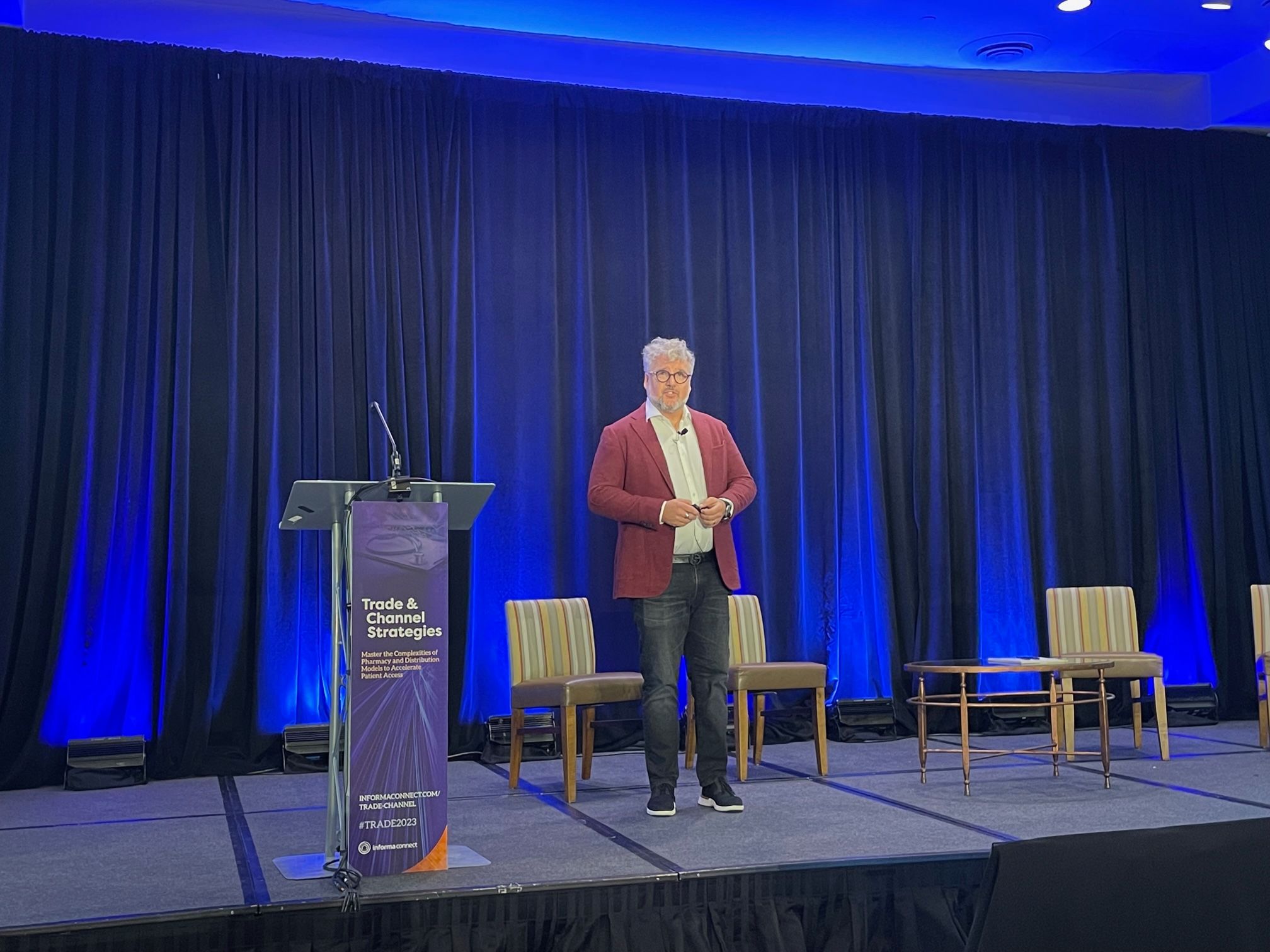Trade & Channel Strategies 2023: A Dive into Pharmacy and the Distribution Channel
Conference keynote offers an industry outlook, including new commercialization challenges.

Informa’s Trade & Channel Strategies Conference in Philadelphia kicked off with a keynote address from Bill Roth, SVP of IntegriChain’s consulting business, Blue Fin Group, and Pharma Commerce columnist. In a presentation titled “The Economics of the Pharmacy and Distribution Channel,” Roth led off with a thought that is a timely as ever given the upcoming holidays: “Our industry is like a snow globe after the pandemic. Everything has been shaken up and it’s now starting to fall back into place.”
He used the term “Pharmageddon” to describe the situation the industry is dealing with—brick and mortar are hemorrhaging, while cash pay and ecommerce are on the rise.
Roth also dove into several other main messages:
- It will be important to choose one third-party logistics provider (3PL) wisely. Looking ahead, having flexibility when it comes to distribution approaches is key if pharma manufacturers want to deliver product to the right place at the right time.
- Effectiveness of both the pharmacy and distribution strategy take precedence over the channel cost, which represents a shift seven years post general medicine (gen med) “patent cliff.”
- Since 2016, due to the end of the aforementioned patent cliff, the generics market has begun to shrink, all while the CPI-U penalty for generics was implemented and as cash pay pharmacies grew popularity. Roth noted that the business models revolving around pharmacy benefit managers (PBMs), retailers, and wholesale distributors are dependent on generics.
- As a result, these trends are anticipated to have negative effects on the above models, while also putting pressure on branded pharmaceuticals at a loss in these models.
- For many manufacturers, launching drugs into the retail space via wholesale is not effective anymore (including from a cost perspective); specialty is considered the “status quo” if fees are not passed along.
Over the course of the past 10-15 years, commercialization, value, access, prescribing and channel strategy have been impacted by the following four trends:
- Product archetypes: PBMs, pharmacies, and distributors hold onto generics and meanwhile, specialty, specialty lite, and gen med struggle to seek adoption because of 2016 Patient Cliff and 2017 Generic CPIU disrupting economics.
- Healthcare/prescription costs and reform: Payer pressure is impacting channels to try to manage their bundles, causing ripples in the market; payer reform drives large YOY increases for premiums, deductions, and out-of-pockets (OOPs)
- Technology & services: Digitizing patient records, patient journeys, transactions, etc. allow for better visibility.
- Channels/chessboard: Legacy models are in “survival mode;” new models are striving to disrupt.
As alluded to earlier, PBMs, retailers, and wholesale distributors are all dependent on generics. In fact, as of 2021, over 92% of prescriptions leaving pharmacies are generic. This is due to a various incentives for retailers.
PBMs are reportedly incentivizing retailers to suppress brands by generic utilization rate of an 85% to 15% blend, which lowers reimbursement on all Rxs if brands outpace generics. Distributors are also incentivizing retailers with generic compliance rations of 85% to 15% if brands outpace generics, while wholesalers put brands on allocation to subdue brand uptake further. The result? Retail pharmacies find themselves turning away branded prescriptions.
There are myriad ways that manufacturers are pushing back however, whether it be by fighting against 340B abuse, lowering wholesaler acquisition costs (WACs); leaving Medicaid and 340B and many others. In regard to the latter, Blue Fin Group notes six pharma manufacturers that have left Medicaid (and 340B as a result).
Reference
The Economics of the Pharmacy and Distribution Channel. December 11, 2023. Trade & Channel Strategies, Philadelphia.